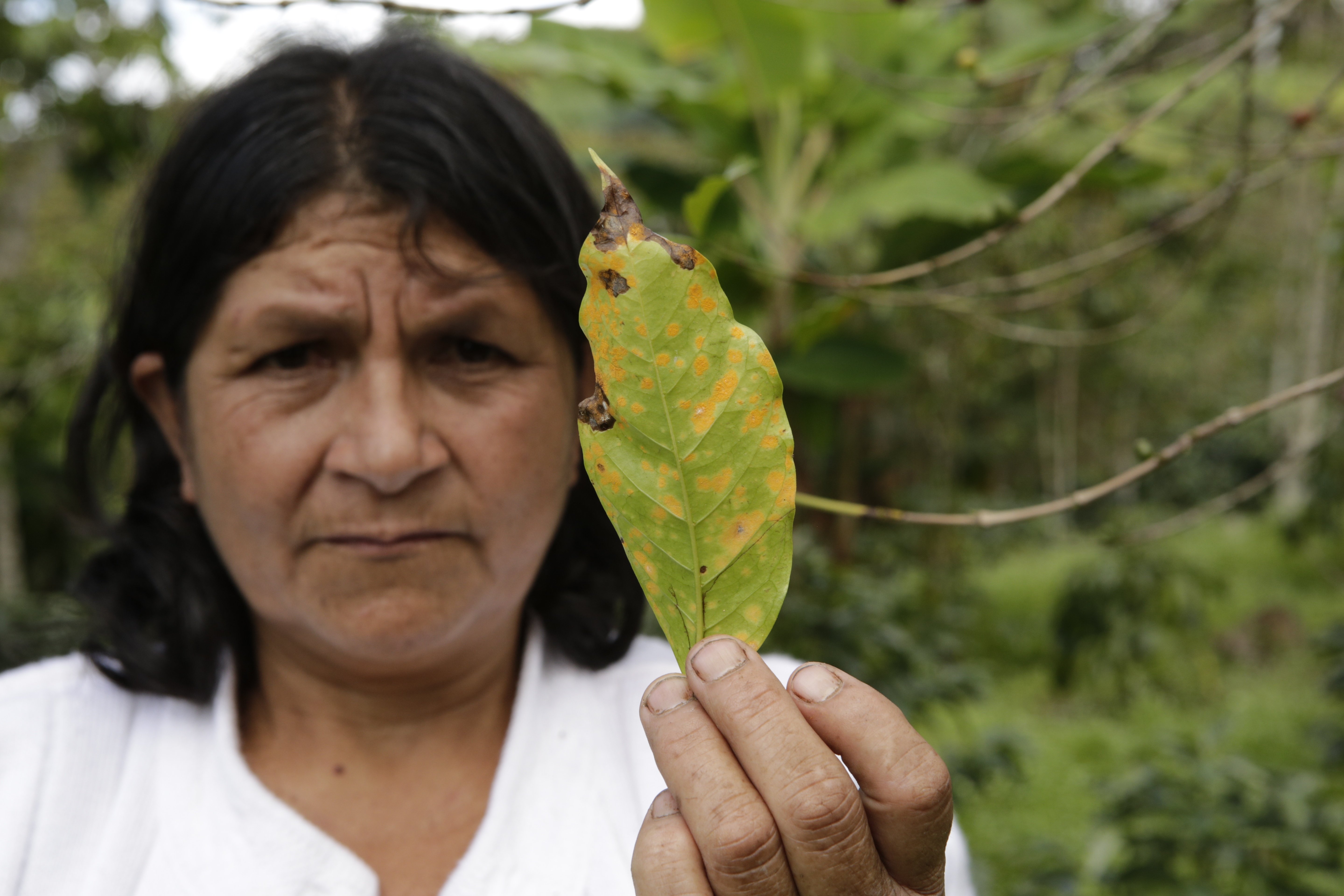
For our client businesses in Peru, deforestation and climate change aren’t distant threats. They’re daily realities.
Many of these coffee businesses are located at the edge of the Amazon rainforest, the largest contiguous forest in the world. But while it may seem limitless, this precious region is in danger of disappearing forever.
From Colombia to southern Brazil, commercial agriculture and logging are destroying vast swathes of the Amazon to produce lumber and clear land for the production of foodstuffs like soybeans and beef. The Rainforest Alliance refers to deforestation like this as a “triple-whammy” of global warming: it destroys trees that keep carbon out of the atmosphere, creates even more emissions as felled trees rot or burn, and replaces healthy forests with crops or livestock that produce ever-rising amounts of greenhouse gases.
The Amazon is critical for absorbing carbon, preserving biodiversity, and mitigating the effects of a changing climate. But bit by bit, the giant forest known as “the lungs of the earth,” is getting smaller.
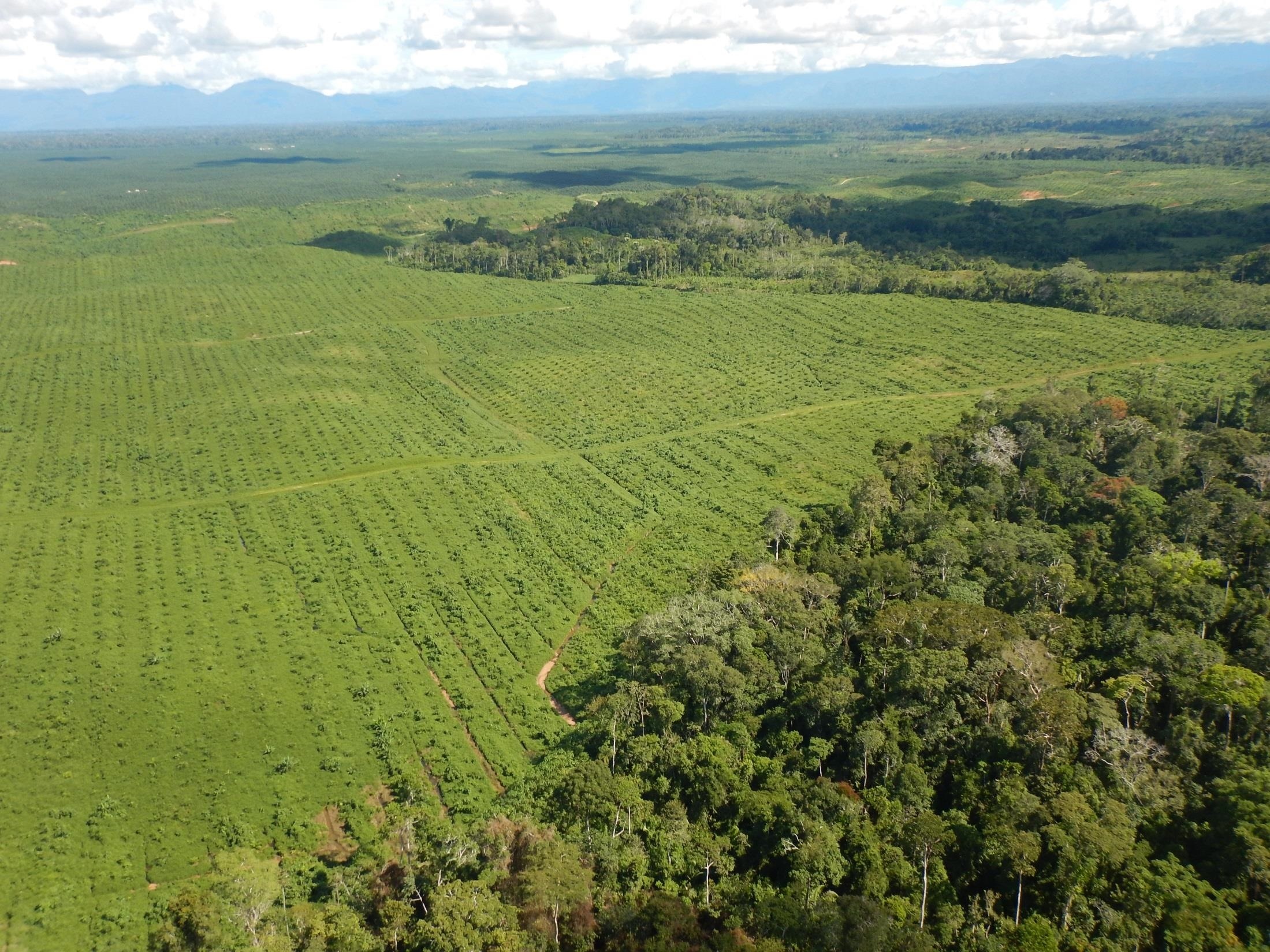
In the Peruvian Amazon, native forest is often cleared to make way for farmland. Photo by CIAT.
Agricultural businesses are often part of the problem—but they don’t have to be. In fact, time and time again we’ve seen our clients recognize their crucial role as stewards of the land they depend on, investing in earth-friendly agricultural practices like agroforestry, organic composting, and reforestation.
We want to support these enterprises in their pursuit of economic prosperity and environmental sustainability. But we can’t reach every impact-focused business on our own. At a recent training in Lima for members of the Council for Smallholder Agricultural Finance (CSAF), we saw what can happen when we work together with other lenders to maximize our collective reach.
CSAF is a pre-competitive collaboration of 12 agricultural lenders that promotes industry standards, responsible lending practices, and positive social and environmental impact. After announcing a common set of environmental, social, and governance (ESG) principles last year, CSAF organized a training in Kenya for loan officers and ESG professionals from each of its member organizations to build a shared understanding of how to put those principles into practice. This month, CSAF members again convened to learn more about emerging ESG threats to coffee landscapes in Peru.
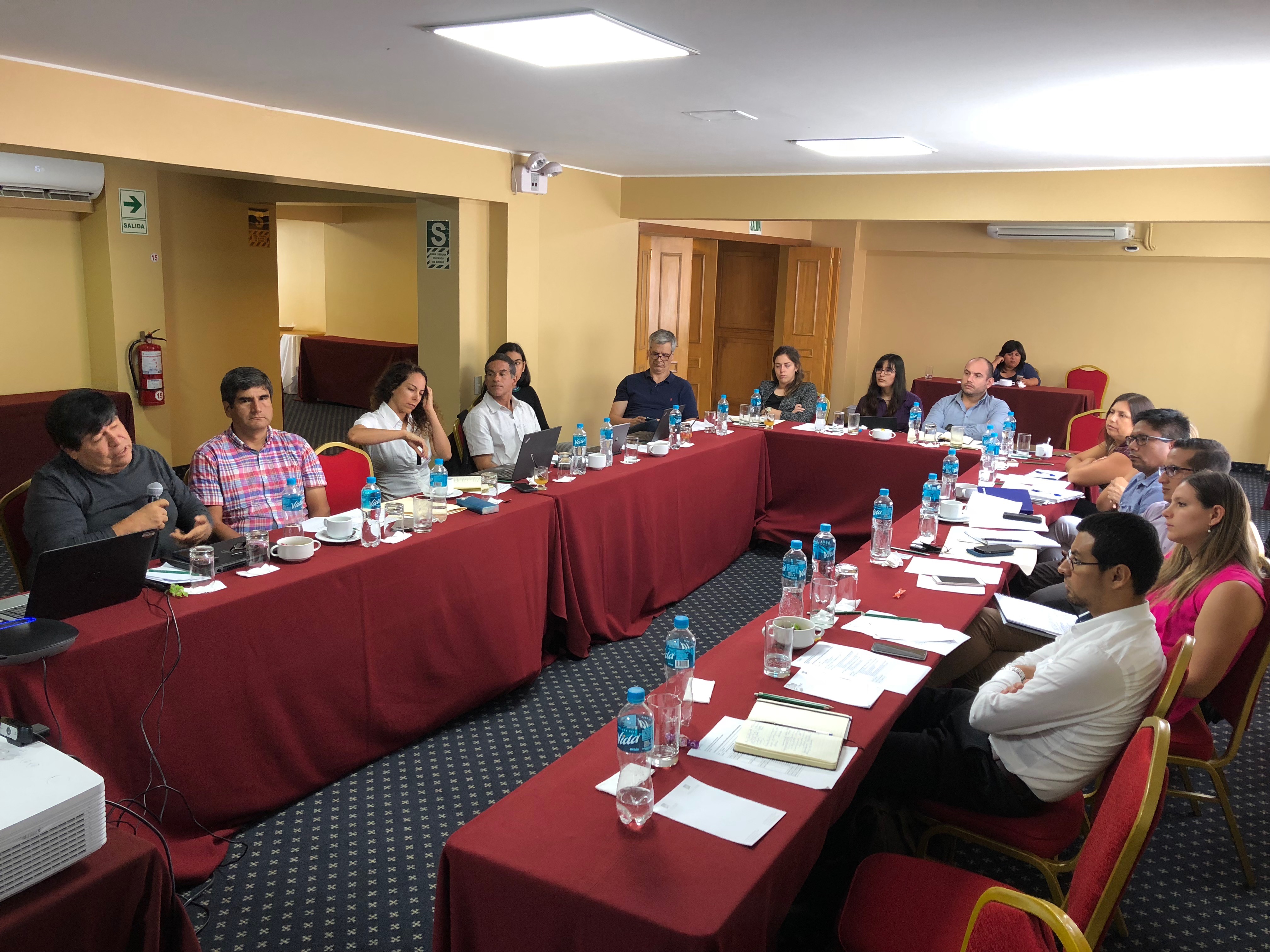 ESG professionals from CSAF member organizations gather in Lima, Peru.
ESG professionals from CSAF member organizations gather in Lima, Peru.
On the first day of the two-day workshop, we were joined by experts from Rainforest Alliance, who outlined a broad set of social and environmental issues in the coffee sector—ranging from child labor to improper use of pesticides—that lenders need to look out for.
While international certifiers like Rainforest Alliance play a key role in establishing standards for fair labor and sustainable business practices, it’s up to agricultural businesses to ensure that their farmers abide by those standards—and up to lenders like us to incentivize compliance through access to finance. Strong monitoring from financiers offers a second “check” to make sure that businesses comply with the certifications that provide them higher prices for their coffee, and holds businesses accountable to promoting earth-friendly agriculture among their suppliers.
On the second day, we dove deeper on two environmental challenges confronting Peruvian coffee farmers: deforestation and climate change. For this section of the workshop, Rainforest Alliance was joined by the International Center for Tropical Agriculture (CIAT), a research institution working at the intersection of agriculture, climate change, and livelihoods, and Terra-i, a collaboration between CIAT and several other organizations that analyzes land use changes. These organizations understand that vulnerable farmers stand on the front lines of climate change and deforestation, and they are committed to arming practitioners like those in CSAF with the information they need to support smallholders and rural businesses.
Over the course of the second day, we reviewed the threat of climate change and deforestation in Peru, examined case studies from across the country, and discussed these issues in the context of the coffee businesses we support. CIAT showed maps predicting how climate change will impact coffee producers in different parts of Peru, based on their analysis of climate and crop models. Terra-i showed satellite images of parts of Peru where our clients operate, highlighting areas where the level of vegetation cover had changed over time. Rainforest Alliance, in turn, showed us climate-smart agriculture techniques that they’re implementing with Peruvian producers, from organic mulch and fertilizer use to shade-grown coffee and water conservation.This type of agriculture is critical to preserving the forests that slow the tide of climate change; if implemented more broadly, it could empower coffee growers to become part of the solution.
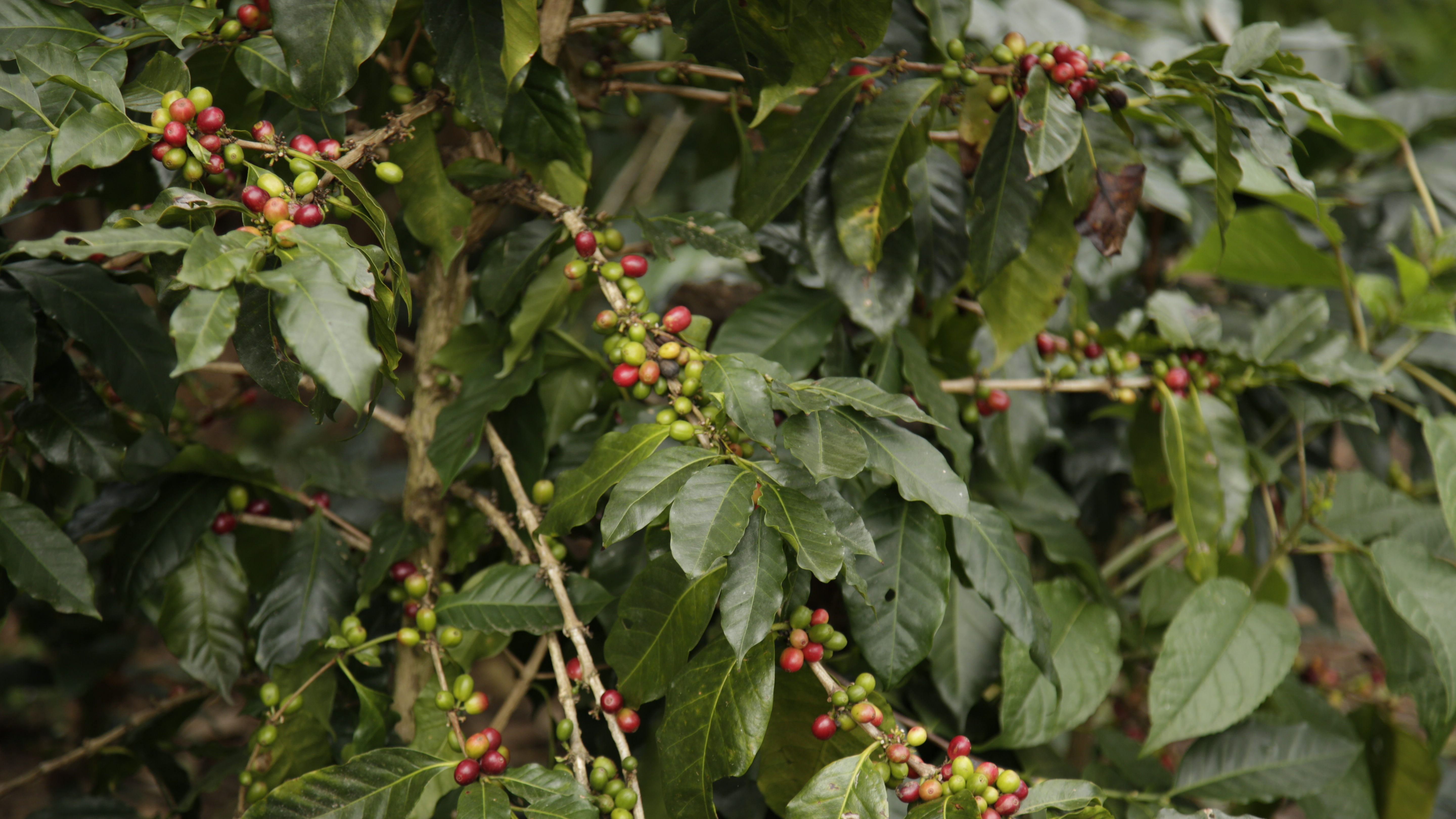
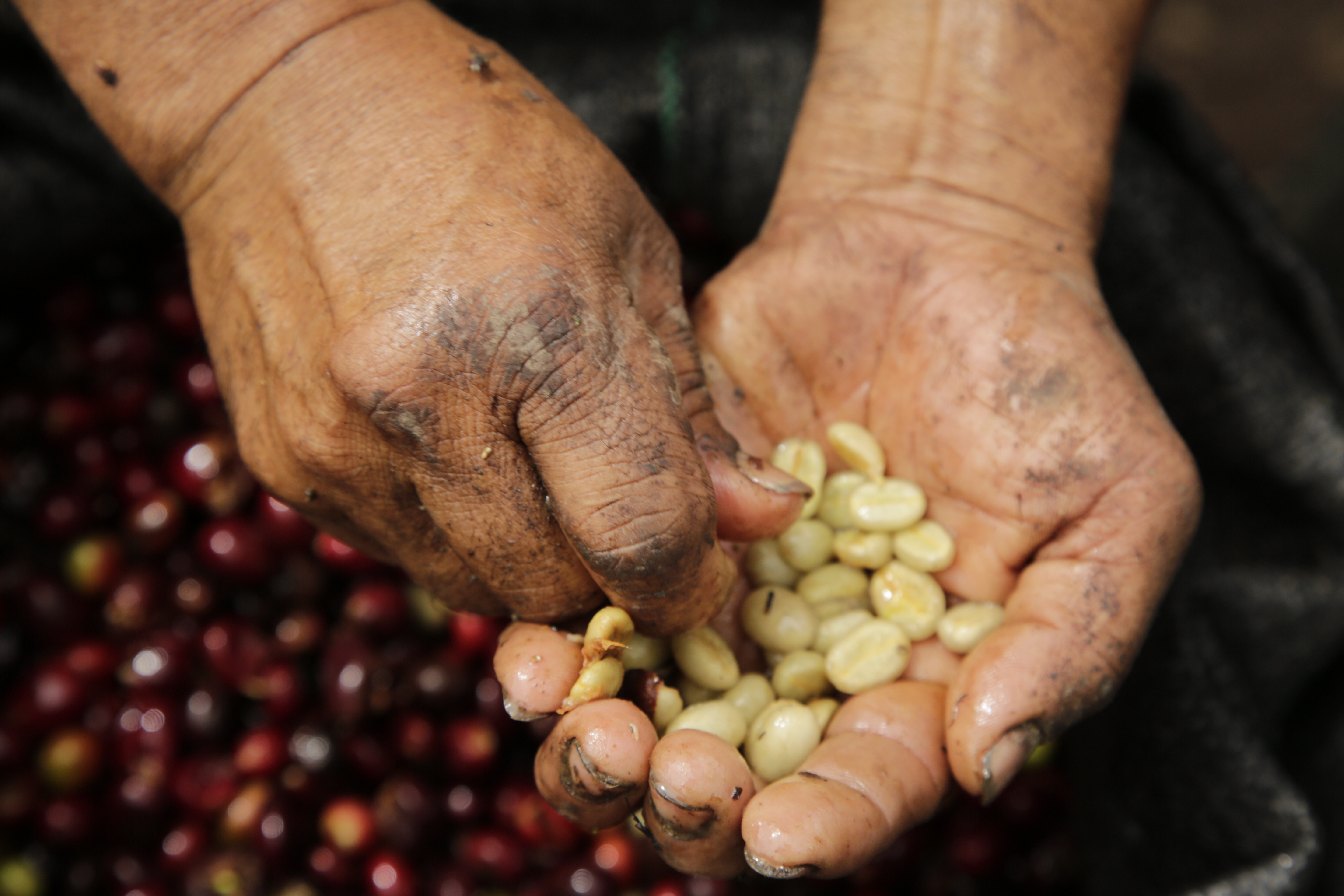
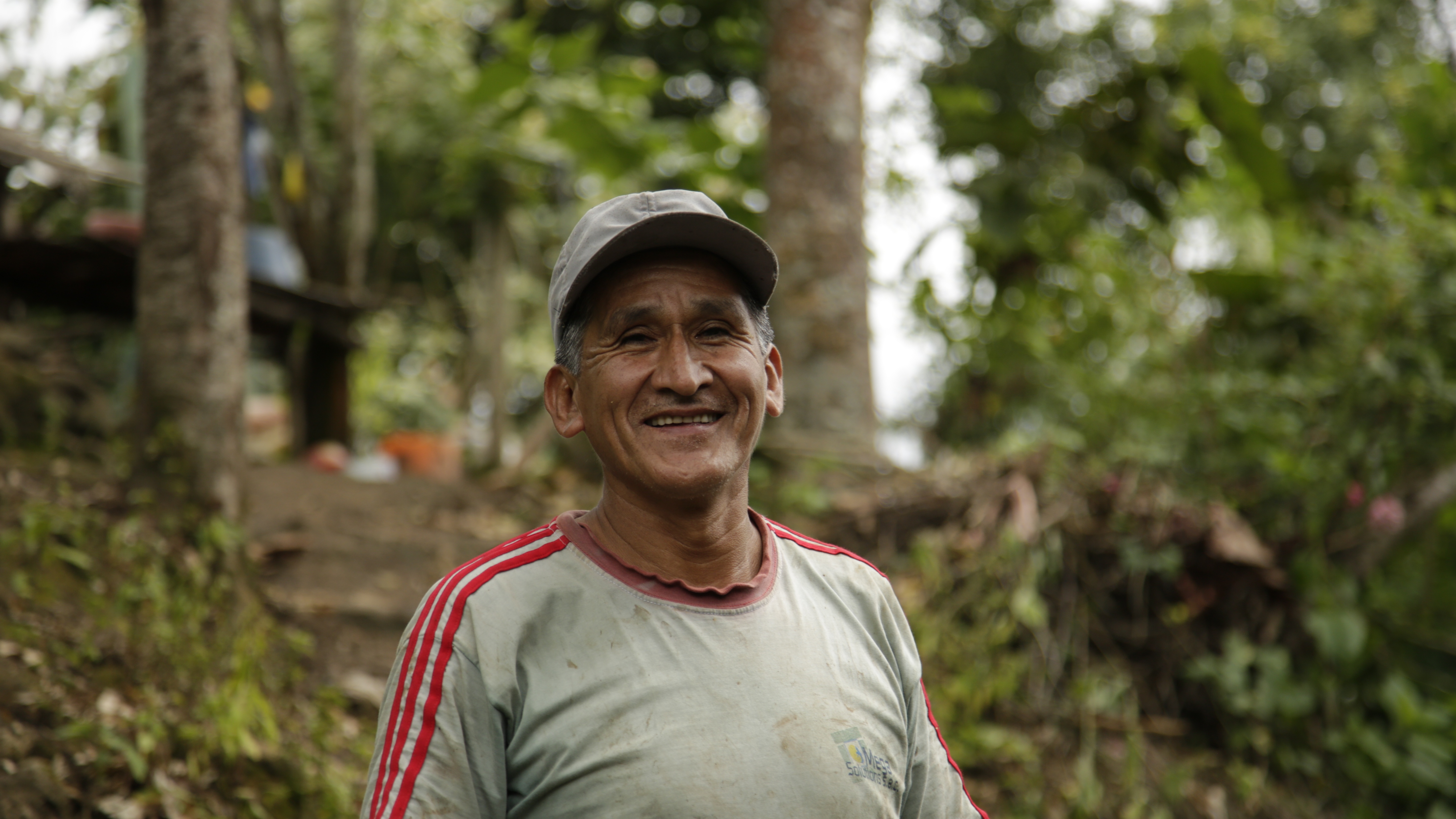
Coffee farmer Idelfo Anderson Mijahuanca shows us his sustainably harvested coffee.
After this workshop, we felt armed with the practical knowledge we need to put our ESG principles into practice. We now know exactly how coffee production can contribute to deforestation and which of our clients might be best positioned to address the issue. We’re already thinking about whether we can work with a few key clients to develop or expand reforestation programs in some of the most vulnerable parts of Peru’s coffeelands.
However, the greatest benefit was less tangible. By coming together with other CSAF members, we saw that the challenges we each faced and the questions we each had were very similar. We may all work for different organizations, but share a common mission: to empower agricultural businesses to unlock opportunities for smallholder farmers. Through collaborations like this training, we can work from a place of common understanding to help businesses address challenges like deforestation and climate change.
Together, we can craft solutions that work for all, with the goal of a greater collective impact than each of us could achieve on our own.
Want to learn more about our work in South America? Click here to read more stories from Bolivia, Colombia, Ecuador, and Peru.

What do you think?